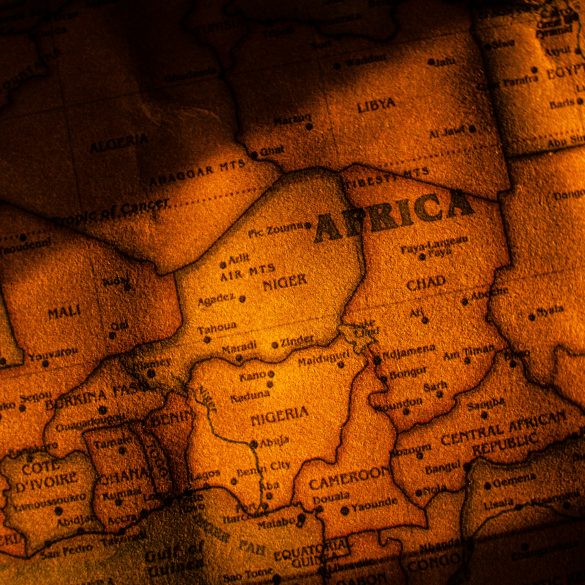Powerful African Kingdoms That Shaped the Continent
When I first started studying African history seriously—honestly, embarrassingly late in my academic journey—I was absolutely blown away by how little I actually knew about the continent’s incredible civilizations. We’re talking about kingdoms that controlled vast trade networks, built architectural marvels, and influenced global politics for centuries. Yet somehow, most of us learned more about medieval European kingdoms than we did about the Kingdom of Kush or the Mali Empire.
What really gets me is how these African kingdoms weren’t just regional powers—they were genuinely global players. The Mali Empire, for instance, was so wealthy that when Emperor Mansa Musa made his pilgrimage to Mecca in 1324, he literally crashed the gold market in Cairo for a decade1. That’s the kind of economic influence we’re talking about here.
Here’s what fascinates me most about studying these kingdoms: they completely shatter the narrative that Africa was somehow “uncivilized” before European contact. Actually, let me be more precise about this—these societies had sophisticated political systems, advanced metallurgy, complex trade networks, and rich cultural traditions that rivaled anything happening in Europe at the time.
Did You Know?
The Kingdom of Kush ruled over Egypt for nearly a century (circa 760-656 BCE), making them one of the most powerful civilizations in the ancient world. Their capitals at Kerma and later Meroë were centers of learning and trade that connected sub-Saharan Africa with the Mediterranean world.
Ancient Powerhouses: The Foundations of African Civilization
Let’s start with the Kingdom of Kush, because honestly, this is where my understanding of ancient Africa really began to shift. Based in what’s now Sudan, Kush wasn’t just Egypt’s neighbor—for nearly a century, they were Egypt’s rulers2. The Kushite pharaohs, often called the “Black Pharaohs,” revitalized Egyptian culture while maintaining their own distinct identity.
What strikes me about Kush is how they managed to blend Egyptian influences with their own traditions. They built their own pyramids—more than 200 of them, actually—but with steeper angles and different burial practices. Their capital at Meroë became a major iron-working center, and their script, Meroitic, remains one of the earliest indigenous African writing systems we know of.
Moving to the Horn of Africa, the Kingdom of Axum presents another fascinating case study. This wasn’t just some isolated African kingdom—Axum was a major player in international trade, connecting the Roman Empire with Ancient India3. Their port city of Adulis was basically the Dubai of the ancient world, bustling with merchants from across the known world.
What really impresses me about Axum is their architectural achievements. The stelae at Axum—these massive stone obelisks—are engineering marvels. The largest one that’s still standing is over 20 meters tall and weighs about 150 tons. But here’s the kicker: they carved it from a single piece of granite. We’re talking about precision engineering that would be challenging even today.
West African Trading Empires: Masters of Commerce
Now, let’s talk about the West African empires, because this is where things get really interesting from an economic perspective. The Ghana Empire (not to be confused with modern Ghana) controlled the gold and salt trade routes for centuries. But it was the Mali Empire that truly captured global attention.
Mansa Musa’s Legendary Wealth
When Mansa Musa embarked on his hajj to Mecca in 1324-1325, he traveled with a caravan of 60,000 people, including 12,000 slaves carrying gold bars. His generosity in distributing gold was so excessive that it caused inflation in Egypt and Arabia that lasted for over a decade.
What’s fascinating about Mali isn’t just the wealth—it’s how they managed it. Timbuktu, one of Mali’s major cities, became a center of learning that attracted scholars from across the Islamic world. The University of Sankore had more students than many European universities of the time4. We’re talking about a place where manuscripts were so valuable that they were used as collateral for loans.
The Songhai Empire, which succeeded Mali, was even larger—at its peak, it was roughly the size of Western Europe. What impressed me most when I was researching Songhai was their administrative system. They had a complex bureaucracy with governors, judges, and tax collectors. Sound familiar? That’s because they were using governmental structures that wouldn’t look out of place in a modern state.
| Empire | Peak Period | Major Cities | Key Achievement |
|---|---|---|---|
| Ghana | 300-1200 CE | Koumbi Saleh | Gold-salt trade control |
| Mali | 1235-1600 CE | Timbuktu, Djenné | Islamic learning center |
| Songhai | 1464-1591 CE | Gao, Timbuktu | Largest African empire |

East African Coastal Kingdoms: Maritime Powers
Moving to the East African coast, we encounter the Swahili city-states—and honestly, this is where I had to completely revise my understanding of medieval African societies. These weren’t just coastal trading posts; they were sophisticated urban centers with their own unique architecture, culture, and political systems.
Kilwa, in particular, was absolutely crucial to Indian Ocean trade. Between the 12th and 15th centuries, Kilwa controlled the gold trade from the Zimbabwe plateau5. The Palace of Husuni Kubwa in Kilwa was one of the largest buildings in the southern hemisphere at the time. We’re talking about a structure with over 100 rooms, complete with indoor plumbing and decorative pools.
What really strikes me about the Swahili coast is how cosmopolitan these societies were. Archaeological evidence shows influences from Persia, India, and China alongside local African traditions. The Swahili language itself is fascinating—it’s fundamentally Bantu but with significant Arabic influences, reflecting centuries of cultural exchange.
The Ethiopian Empire: Africa’s Christian Kingdom
Now, I have to talk about the Ethiopian Empire, because it represents something truly unique in African history. While much of Africa was adopting Islam or maintaining traditional beliefs, Ethiopia remained a Christian kingdom for over a thousand years. The rock-hewn churches of Lalibela, carved directly into the ground in the 12th century, are architectural marvels that still take your breath away.
What’s remarkable about Ethiopia is how they maintained their independence. While other African kingdoms eventually fell to colonial powers, Ethiopia successfully resisted colonization (except for the brief Italian occupation from 1936-1941). The Battle of Adwa in 1896, where Ethiopian forces defeated the Italian army, was a massive boost to African pride and anti-colonial movements worldwide6.
Southern African Civilizations: Stone Cities and Cattle Kingdoms
Moving south, we encounter Great Zimbabwe, and I’ll be honest—when I first saw photos of these stone ruins, I had trouble believing they were built by indigenous African peoples. That’s how thoroughly colonialism had warped my understanding of African capabilities. But the archaeological evidence is overwhelming: between the 11th and 15th centuries, the Shona people built these incredible stone structures without mortar, using a technique that’s still impressive today.
Great Zimbabwe wasn’t just architecturally impressive—it was the center of a vast trade network. Archaeologists have found Chinese porcelain, Persian pottery, and Arabian glass there7. This was a truly international trading hub, connecting the African interior with the Indian Ocean economy.
- The Great Enclosure at Zimbabwe spans over 250 meters in circumference
- Population at its peak likely exceeded 18,000 people
- Controlled gold mining operations across the region
- Trading relationships extended to Southeast Asia and China
The Buganda Kingdom: Political Sophistication
In the Great Lakes region, the Buganda Kingdom developed one of the most sophisticated political systems in pre-colonial Africa. Their parliament, the Lukiiko, and their complex system of chiefs and governors created a remarkably stable society that lasted for centuries8. What impresses me most is how they balanced centralized authority with local autonomy.
Their Lasting Impact on Modern Africa
Here’s what really gets me thinking: these kingdoms didn’t just disappear when colonialism arrived. Their influences are everywhere in modern Africa. The Swahili language, which emerged from those East African trading cities, is now spoken by over 100 million people. The administrative traditions of kingdoms like Buganda influenced modern governmental structures. Even architectural styles from these ancient kingdoms can be seen in contemporary African buildings.
Why This History Matters Today
Understanding these powerful African kingdoms isn’t just about correcting historical misconceptions—it’s about recognizing that Africa has always been home to sophisticated civilizations capable of remarkable achievements. This history provides a foundation for contemporary African pride and identity that extends far beyond colonial narratives.
What strikes me most about studying these kingdoms is how they challenge every stereotype about pre-colonial Africa. We’re talking about societies with complex political systems, advanced technology, international trade networks, and rich cultural traditions. The University of Timbuktu had libraries with hundreds of thousands of manuscripts while Europe was still emerging from the Dark Ages.
Looking at modern Africa, you can see echoes of these great kingdoms everywhere. The entrepreneurial spirit that drove the trans-Saharan trade networks? It’s alive and well in contemporary African business. The architectural innovations of Great Zimbabwe? They’re inspiring modern African architects. The scholarly traditions of Timbuktu? They’re being revived in universities across the continent.
- These kingdoms demonstrate Africa’s long history of political sophistication
- They showcase African innovations in architecture, metallurgy, and governance
- They prove Africa’s central role in global trade networks
- They provide models for contemporary African development
As I wrap up this journey through Africa’s powerful kingdoms, I’m reminded of how much we still have to learn. Every archaeological discovery, every translated manuscript, every architectural survey reveals new layers of complexity and achievement. These weren’t just African kingdoms—they were world powers that shaped global history in ways we’re only beginning to understand.
References



